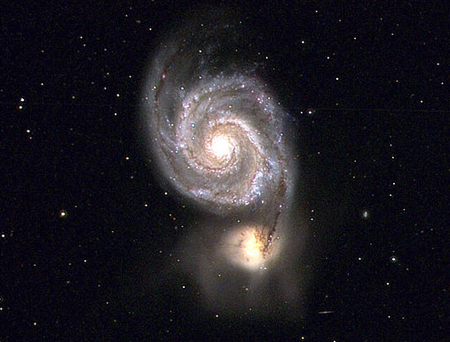I bought myself a new Stellarvue telescope for my birthday this year, an SV110ED, which is currently on sale and a tremendous value.
Stellarvue's telescopes are my favorite commercially manufactured telescopes, bar none. And my new scope makes me feel that even more so.
It's a replacement for my 8" Newtonian for personal use. My 8" Dobsonian will still be my scope for public star parties.
The performance of this telescope easily meets the theoretical maximum for a scope of this size in terms of resolution in its images. Double stars at 1.05 arcseconds resolve cleanly as two distinct points. When the sky clears up, I'm planning to see how well it does beyond theoretical limits. (It's worth mentioning that theoretical limits are not hard physical limits on performance. The Dawes Limit assumes a number of things about the optics and the light. This is why it's possible to have a telescope exceed theoretical limits in its actual performance.)
Not only is resolution excellent, but the contrast is fantastic as well, making this scope create amazing images of deep sky objects for a telescope of its aperture.
I'm very happy with this telescope.
The Mount
The mount for this scope was a bit of a compromise for me. I don't like computerized mounts. However, I want a clock drive so that the telescope will track the object I'm looking at when I use high powers (and if any scope is suited for high power observation relative to its aperture, it's this one.) These days, that pretty well means you get a computer. Stand-alone clock drives are available, but they're not the norm.
I decided to go ahead and take the plunge. I got a Celestron AVX mount from Stellarvue with my new telescope. It's got a computer.
Fortunately, the computer is easy to start up. If you aren't particularly concerned about alignment, or are willing to do a coarse alignment mechanically, you can just start it up with your last settings and skip any calibration procedure. Calibration procedures are the Great Wall that computer driven mounts erect between the observer and the sky.
If you do decide to calibrate, however, the AVX computer's calibration is not too onerous, and is fairly flexible in terms of selecting visible stars. These computers have come a long way.
So I think I can live with the computer.
The mount itself is a German Equitorial Mount. That means heavy. The tripod itself is quite heavy, as is the counterweight and the mount head itself. That means that moving this scope out under the stars is more of a chore than a simple alt-az mount would be. That's the cost of sky tracking, I guess. However, this mount will also support my desired future upgrade to my SV110ED, the SV115 Apo Triplet. So again, I can live with it.
I made one little addition to the telescope's mounting rail, barely visible under the scope tube in the image above. I added a bumper to keep the telescope from sliding through the dovetail. It sits on the sky end of the dovetail mounting rail. So if I have the mount dovetail pointing skyward when I put the scope into it, I don't have to worry about the scope sliding through and onto the ground if I fumble a bit in the dark. Here's a closer image, with an arrow pointing at the bumper:
Now I want more two inch eyepieces...
Portability of Java Programming Skills
-
You can program in Java (or are learning to.) That's great! But what else
can you do with those skills? Are you trapped with Java?
Not at all. One of the r...





